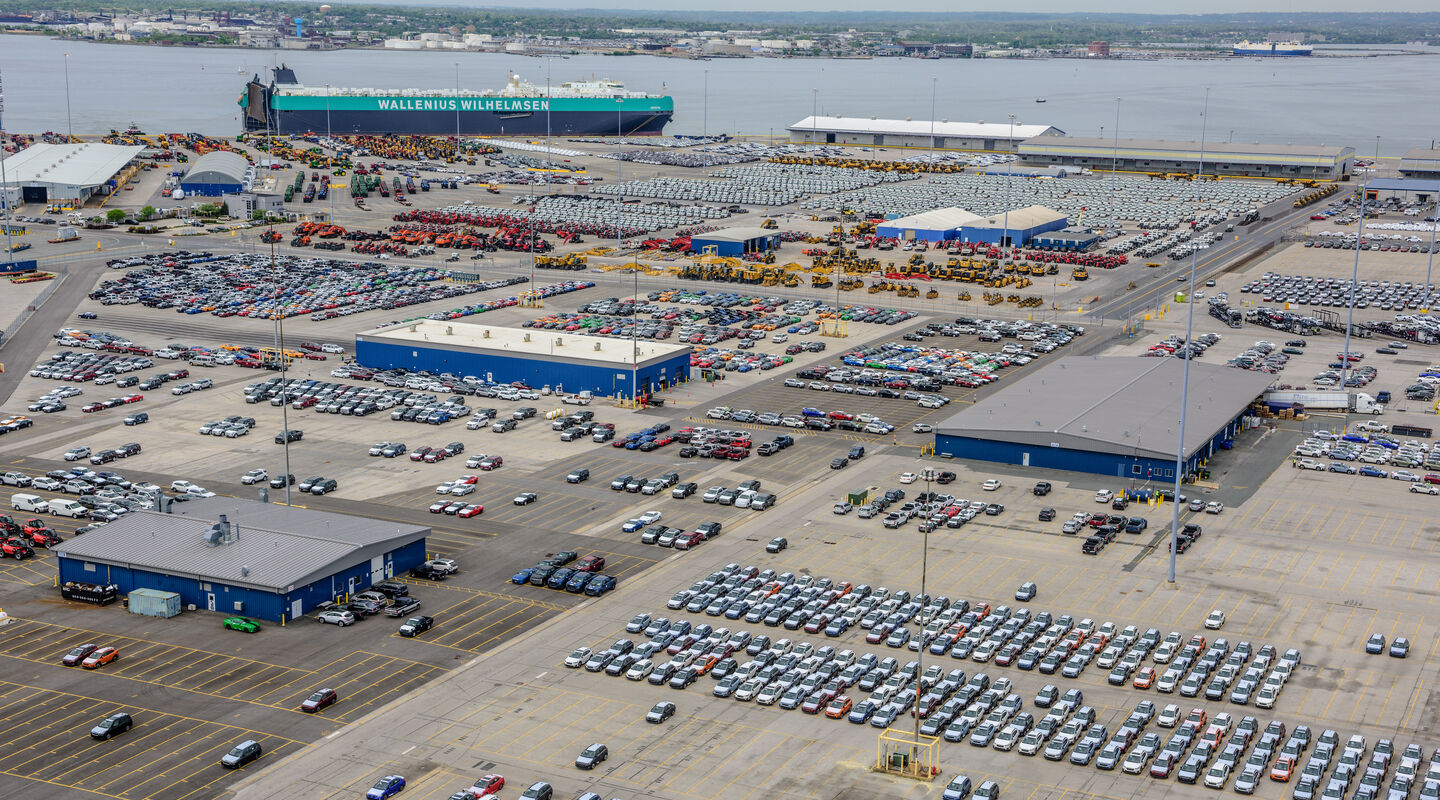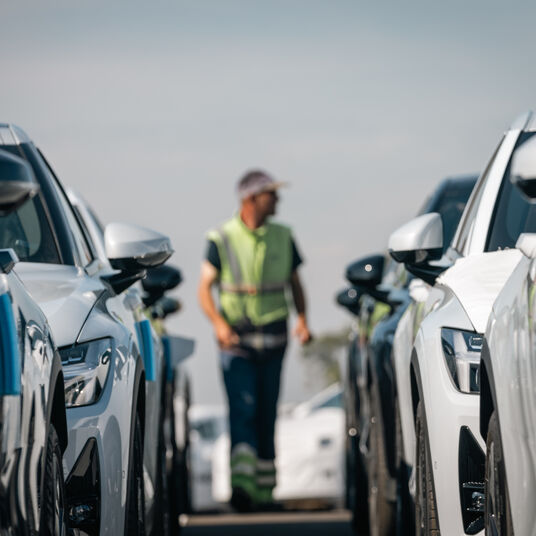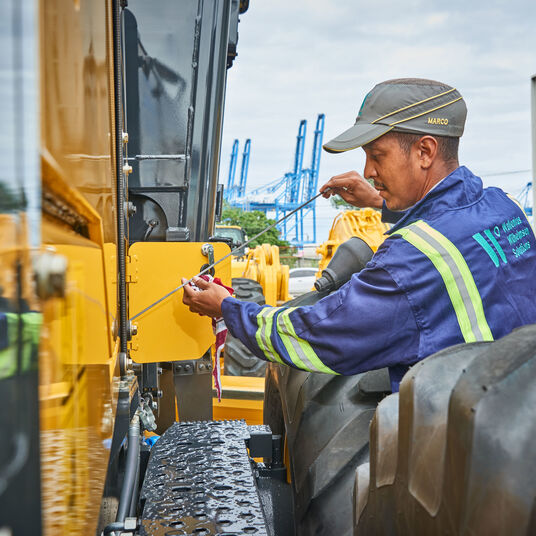Behind the scenes at our RoRo terminals
With eight owned and operated RoRo terminals around the world and skilled teams, our terminal services support the smooth and safe movement of your products, from arrival at the gate to loading the vessel.

Arrival of products
Products enter our terminals either by truck, rail or water.
When arriving by truck, products are delivered through the terminal gate. Before entry, truck drivers must prepare and present the required documentation, detailing the product’s weight and packaging. The driver waits for a green light to enter, which ensures a streamlined flow into the terminal and eases truck congestion.
For rail deliveries, the rail provider supplies all necessary documentation to the terminal operations team prior to arrival. Once the products arrive, they are unloaded either by drivers or by the terminal operations team, ensuring a smooth handover.
If products arrive by water, the vessel or barge skipper presents a waybill upon arrival, which is signed by the terminal team. The terminal operations team then discharges these products, ensuring safe and efficient handling throughout the process.
Offloading products
The terminal operations team unload breakbulk products using a forklift or crane. The products are then placed on our specialist handling equipment, ready for vessel loading.
For complex and oversized units, the team uses technical drawings with information on how the product should be handled and secured. We carefully calculate how to move products and the correct lashing arrangements to ensure it’s safe and secure.
Meanwhile, self-propelled products such as cars and machines are unloaded and driven by skilled drivers to the first place of rest on the terminal.
Terminal capacity
Our terminals are capable of handling hundreds of cars, machines and breakbulk products every day. In a typical year, our terminal in Zeebrugge can handle over 850,000 tons of cargo.
Product inspections and tracking
As products move through our terminals a series of inspections take place, including damage checks. We use the latest tracking technologies to provide you with that all-important visibility of your products at all stages within the terminal.
Processing services
Before products are loaded onto a vessel, modifications and checks can be performed at the terminal’s equipment processing center (EPC) or vehicle processing center (VPC).
Preservation work, such as applying a protective layer of fluid film, is a common request at our EPCs. More extensive preparation for market delivery such as customization and pre-delivery inspections can be performed at the destination’s terminal.
VPCs offer everything from additional checks, to repairs, accessorizing, homologation and charging the batteries of electric vehicles for transit.
Value-added services
We have a strict clean cargo policy. If any product doesn’t meet the regulatory guidelines of the destination country, our teams will contact the customer to coordinate the cleaning process. On-site cleaning stations at our terminals typically include car wash for vehicles and high-pressure washing areas for machines.
Products destined for Oceania that have not been BMSB-treated prior to arrival at the terminal can get heat treatment or fumigation treatment at our terminal. Heat treatment is typically used for passenger cars and smaller machinery, while fumigation is the method of choice for larger breakbulk and machines.
Heat treatment always takes place in covered, insulated facilities. Fumigation is carried out under a covered shed or sometimes in an outdoors facility for out-of-gauge cargo.
BMSB treatment requires careful planning as all units need to be treated within a strict timeframe before vessel departure. All treatments need to be in full compliance with the regulations set out by the Department of Agriculture and Water Resources (Australia) and Ministry for Primary Industries (New Zealand).
Product staging and storage
Products can be temporarily stored at our terminals while awaiting vessel departure if necessary. However, thanks to our frequent and reliable liner service schedule, average dwell times remain short. For sensitive cargo, we offer storage options under a roof to protect it from the elements.
8. Loading products to vessel
Our vessel planners use software to allocate each unit to a particular deck depending on its dimensions. This information is then used by the cargo superintendent to plan the vessel loading operations.
Once a vessel arrives at its designated terminal berth, stevedores start loading products and place them on the assigned decks of the vessel. Depending on the volume of cargo being loaded, a typical vessel loading will take place on the same day.
So, whether you’re shipping cars or heavy machines, our RoRo terminals make sure your cargo rolls out smoothly in market-ready condition.


